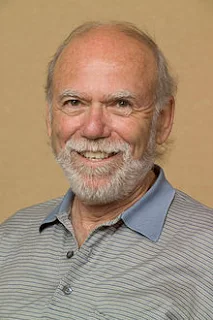The Nobel Prize in Physics - 2017
Introduction:
NOBEL PRIZE
The will of the
scientist Alfred Nobel established the prices in 1895. The prizes in Chemistry,
Literature, Peace, Physics and Physiology or Medicine were first awarded in
1901. Each recipient or Laureate , receives a gold medal, a diploma and a sum
of money that has been decided by the Nobel foundation.
NOBEL PRIZE IN
PHYSICS
The Nobel Prize
in Physics is a yearly award given by the Royal Academy of Sciences for
thosewho conferred the most outstanding contributions for mankind in the field
of physics.
THE NOBEL PRICE
IN PHYSICS 2017
Announcements of
2017 Nobel Prize in Physics by Professor Goran K Hansson, Secretary Generalof
the Royal Swedish Academy of Sciences on 3 October 2017
Dr. Rainer Weiss
receives half the prize. The remaining half is shared by Dr. Barry C Barish and
Dr. Kip S Thorne “For decisive contributions of Gravitational waves.”
Dr. RAINER WEISS
Born: 29
September 1932, Berlin, Germany
Awards: Gruber
Prize in cosmology
Spouse: Rebecca
Young
Nationality:
American, German
Education:
Massachusetts Institute of Technology
Dr. Rainer Weiss
is known for his contributions in gravitational physics and astrophysics. He is
a Professor of physics emeritus at MIT and an adjunct professor at LSU. He is
best known for inventing the laser interferometric technique which is the basic
operation of LIGO.
Dr. BARRY C
BARISH
Born: 27 January
1936 Nebraska, U.S
Awards: Klopstey
Memorial award, Enrico Fermi price
Spouse:
Somoan Barish
Education:
University of California, Berkeley
Dr. Barry C
Barish is an American experimental physicist and laureate. He is a Linde
professor of Physics emeritus at California Institute of Technology. He is a
leading expert on gravitational waves.
KIPS THORNE
Born: 1 June
1940 Utah, USA
Awards:
Lilienfield Prize, Albert Einstein Medal
Education:
Massachusetts Institute of Technology
Kip S Thorne is
an American theoretical physicist and Nobel laureate, known for his contributions
in gravitational and astrophysics.
WHAT DID THEY
DISCOVER?
They are
receiving the prize for the discovery of the gravitational waves released by
violent events in the universe such as the merger of black holes. The first
time this was detected was on September 14 2015 by the LIGO-VIRGO
collaboration. Since then three more detections have been made, the latest one
on September 28 2017.LIGO, the Laser Interferometer Gravitational Wave
Observatory, is a collaborative project with over one thousand researchers from
more than twenty countries. Together they have released a vision that is almost
fifty years old. The 2017 Nobel laureates have, with their enthusiasm and
determination, each been invaluable to the success of LIGO. Rainer Weiss and Kip
S Throne, together with Barry C Barish, the scientist and leader who brought
the project to completion,
ensured that four decades of efforts led to gravitational waves finally being observed.
WHY DO
GRAVITATIONAL WAVES MATTER TO US?
The
discovery is due to an extremely delicate experiment. Gravitational waves were predicted
by Einstein almost 100 years ago. After about 50 years of experimentation the
waves were detected. The discovery and the repeated detection has made the
possibility of gravitational wave astronomy very real.
Gravitational
wave astronomy is a way of mapping some of the most violent processes in the
universe such as black hole or neutron star merging that cannot be detected
with light or conventional methods.
The
discovery can pave the way for proving the general theory of relativity, so
that we can look deeper and deeper into the universe.
In
the mid 1970’s, Rainer Weiss had already analyzed possible sources of
background noise that would disturb the measurements and had also designed a
detector, a laser-based interferometer which would overcome this noise. Early
on both Kip Thorne and Rainer Weiss were firmly convinced that gravitational
waves could be detected and bring about a revolution in our knowledge of
universe.
Gravitational
waves spread at the speed of light, filling the universe, as Albert Einstein described
in his general theory of relativity. They are always created when a mass
accelerates, like when a pair of black holes rotate around each other. Einstein
was convinced that it would never be possible to measure a change thousands of
times smaller than atomic nucleus, as the gravitational wave passed the earth.
Reference
Wikipedia
Journals
Submitted By
Athira V
Akshatha G
Ahalya A V
Akhila K
Amal George




No comments:
Post a Comment